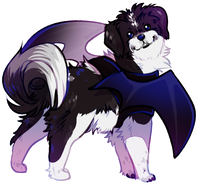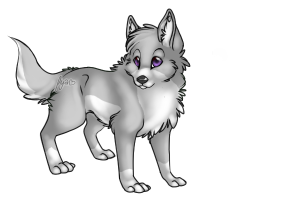It was nearly midnight on December 31 in the year 1999 when a meteor struck the Earth outside of a small town in temperate United States. Small, dinosaur-like creatures hobbled from the rocky core as chunks fell from the edges. The meteor strike was noticed immediately and authorities erected fences to contain the reptiles. Shortly after, a lab and research facility was built around them.
In the months that followed, more meteors touched down around the world and were reported to have the small dinosaurs venturing into our world. At each site, they were contained to the immediate area and researchers traveled to examine them.
Now, nearly thirteen years of study later, these creatures have been announced safe for human handling and are available to the general public. With no scientific classification, as it is yet to be discovered what species they are, they have been called simply Pocket Sauruses.
In the months that followed, more meteors touched down around the world and were reported to have the small dinosaurs venturing into our world. At each site, they were contained to the immediate area and researchers traveled to examine them.
Now, nearly thirteen years of study later, these creatures have been announced safe for human handling and are available to the general public. With no scientific classification, as it is yet to be discovered what species they are, they have been called simply Pocket Sauruses.
Staff
- Dia. (owner/artist)
Rules
- You may
-Use as a character
-Add cute, pretty, reasonable accessories
-Follow species standards
-Suggest themes
You may not
-Use as a fursona
-Claim the species
-Change the design
-Add gory, harmful, unreasonable accessories
-Sell/Trade/Give to an adoption center
Adoption
- Obtain a Pocket Saurus by going to the thread where adoption is labeled as open. Fill out a form correctly without editing the format and send one of the options listed for payment on that group.
Themed releases(where all four Sauruses relate to a common theme) will be released on each multiple of ten.
Customs
- Currently not available
Breeding
- Currently not available
About
- Height - 8 to 12 inches at the top of the head
Length - Nose to tail-tip length varies from individual to individual
Weight - 10 to 25 pounds
Males are commonly larger than females.
Pocket Sauruses that come from cold regions are commonly pale colors. Their tropical counter-parts tend to be brighter and richer. Desert and temperate regions produce sauruses of varying colors.
Very rarely do they have more than three colors on their body. Their scales are commonly a slightly different shade than the main color on their body. It is not unheard of, however, to see one with different colored scales. Females tend to have light, complimenting dots. Males mature with bright, contrasting dots.
All females share an almost identical set of dots: an amount on their haunches and two by each eye. Like females, males share an almost identical set of dots around their shoulders. The pattern of these dots remains fairly constant and is the same on both sides of the saurus.
These dots are used to attract a mate and appear in their full color once the saurus reaches maturity.
The Pocket Saurus diet consists of leafy plants, vegetables, fruits, fungi, and nuts. Some sauruses from coastal regions have developed a taste for fish and shell-fish and some have turned to eating insects. They don't appreciate any other meat. Saurus love candy and sugary treats. However, once they are allowed a taste, they become relentless about obtaining more.
Pocket Sauruses are extremely social and also quite vocal. In the facilities, they formed groups of ten or more with random distribution of males and females. It is common for offspring to venture from their herd to find another herd or gather other loners to form a new herd.
They communicate using loud chirps, barks, squeals, and roars. In the quest to find a mate or when competing with another male, males make low grumbling sounds. Females make a similar sound only when communicating with her young.
Males attempt to impress females by puffing out their chests and presenting the brightly colored dots on his shoulders. He may also offer special pieces of bark, rocks, shells, and the like or food to try and gain her attention.
A female lays up to four small eggs which she cares for with the help of other females of the herd.
They do not mate for life. Sauruses mature at around a year and a half old and it is expected that they may live to be around 30 years old.
It is unknown where they came from or how they survived the trip through the Earth's atmosphere to emerge safely from their rocky cell.
Meteors continue to fall and those areas are quickly contained and the specimens are examined.




















